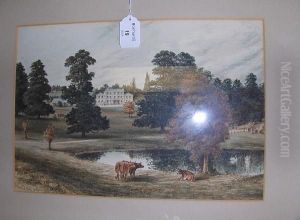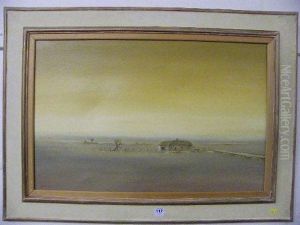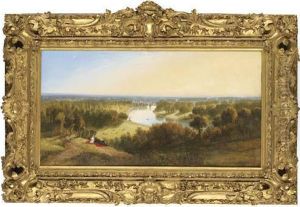Edward Bradley Paintings
Edward Bradley, also known by his pseudonym Cuthbert Bede, was an English clergyman, novelist, and humorist, rather than a widely recognized artist in the traditional sense. Born on March 25, 1827, in Kidderminster, Worcestershire, Bradley was the son of a solicitor. He was educated at Durham University and graduated with a degree in classics in 1850.
Bradley's career was multifaceted; he pursued his vocation in the Anglican Church while also engaging in writing and illustrating. His most famous work is the satirical novel 'The Adventures of Mr. Verdant Green,' published in three parts between 1853 and 1856. This novel is noted for its humorous depiction of the life of an undergraduate at the University of Oxford. Bradley illustrated this work himself under his pseudonym, and it is for these illustrations, as well as his writings, that he gained a level of artistic recognition.
In addition to his literary activities, Bradley served various ecclesiastical positions. He was appointed as a rector of Stretton in Rutland, and later as the rector of Denton-with-Caldecote in Huntingdonshire. Throughout his career, he contributed to various periodicals and magazines, showcasing his wit and humor.
Bradley's contributions to literature and his illustrations remain an interesting footnote in the Victorian era's cultural history. His work reflects the humor and societal observations of his time, providing insights into 19th-century English university life and the Anglican Church. Despite not being a central figure in the history of art, Bradley's illustrations complement his literary legacy and offer a charming glimpse into his creative talents.
Edward Bradley passed away on November 12, 1889. His work, particularly 'The Adventures of Mr. Verdant Green,' has continued to be enjoyed by generations for its light-hearted and comedic portrayal of its characters and for the illustrations that bring the story to life.


